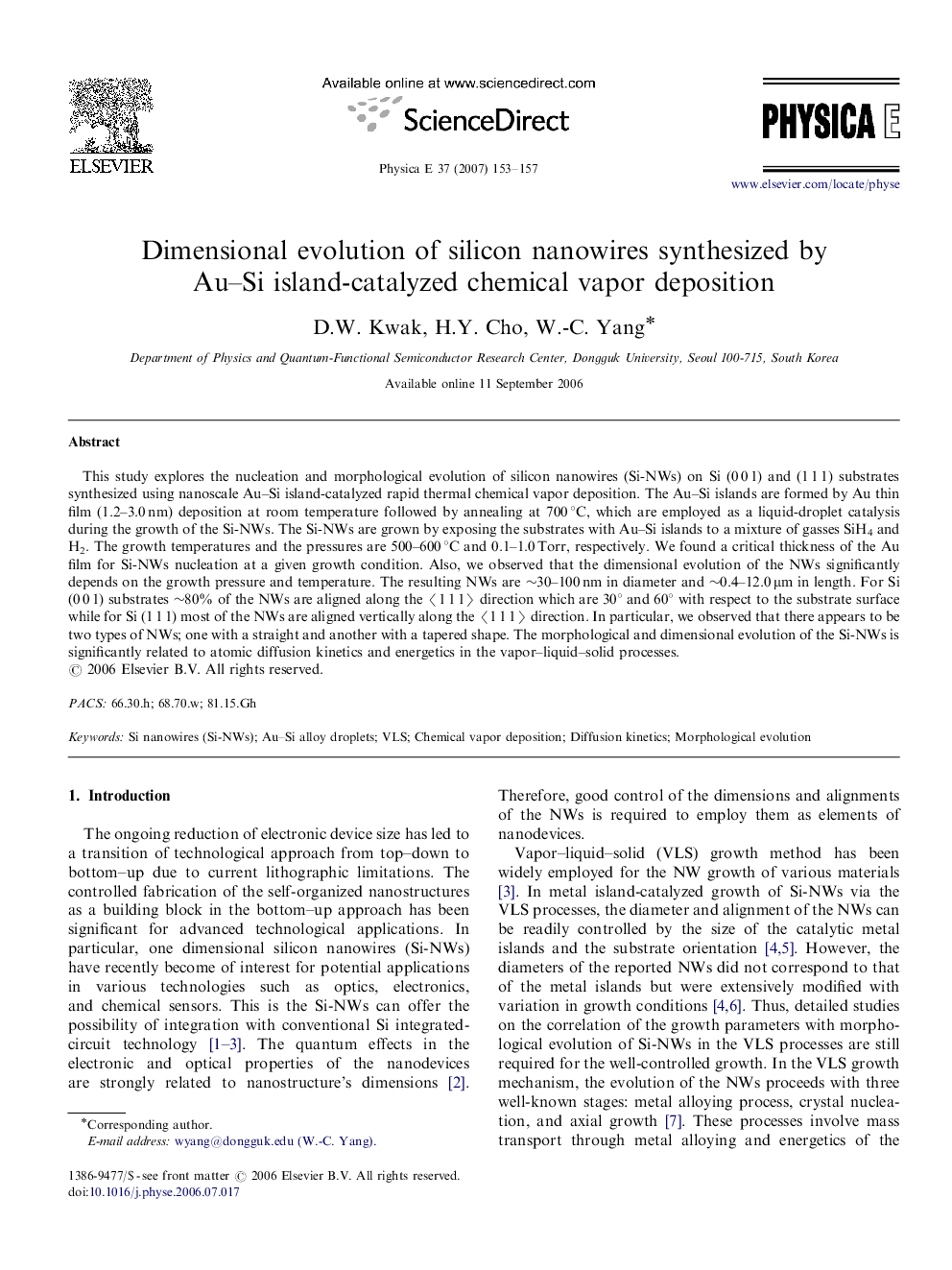| Article ID | Journal | Published Year | Pages | File Type |
|---|---|---|---|---|
| 1547214 | Physica E: Low-dimensional Systems and Nanostructures | 2007 | 5 Pages |
Abstract
This study explores the nucleation and morphological evolution of silicon nanowires (Si-NWs) on Si (0 0 1) and (1 1 1) substrates synthesized using nanoscale Au-Si island-catalyzed rapid thermal chemical vapor deposition. The Au-Si islands are formed by Au thin film (1.2-3.0 nm) deposition at room temperature followed by annealing at 700 °C, which are employed as a liquid-droplet catalysis during the growth of the Si-NWs. The Si-NWs are grown by exposing the substrates with Au-Si islands to a mixture of gasses SiH4 and H2. The growth temperatures and the pressures are 500-600 °C and 0.1-1.0 Torr, respectively. We found a critical thickness of the Au film for Si-NWs nucleation at a given growth condition. Also, we observed that the dimensional evolution of the NWs significantly depends on the growth pressure and temperature. The resulting NWs are â¼30-100 nm in diameter and â¼0.4-12.0 μm in length. For Si (0 0 1) substrates â¼80% of the NWs are aligned along the ã1 1 1ã direction which are 30° and 60° with respect to the substrate surface while for Si (1 1 1) most of the NWs are aligned vertically along the ã1 1 1ã direction. In particular, we observed that there appears to be two types of NWs; one with a straight and another with a tapered shape. The morphological and dimensional evolution of the Si-NWs is significantly related to atomic diffusion kinetics and energetics in the vapor-liquid-solid processes.
Related Topics
Physical Sciences and Engineering
Materials Science
Electronic, Optical and Magnetic Materials
Authors
D.W. Kwak, H.Y. Cho, W.-C. Yang,
